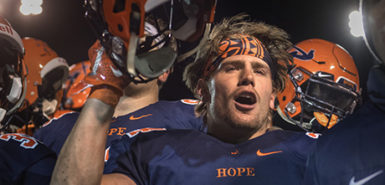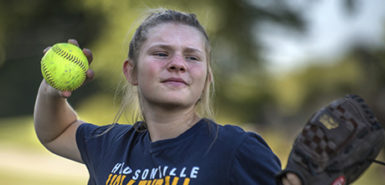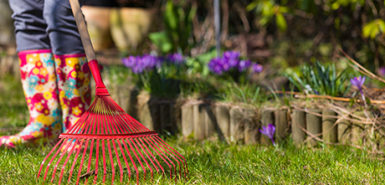
The offense dribbles the soccer ball down the field. The player cuts to his right, then to his left as he tries to hold the defender at bay.
On defense, Brad Reed is doing his best to follow the ball in an effort to keep his opponent from scoring. All of a sudden, his knee buckles and he falls to the ground as the first half of the game is about to end.
“I watched my lower leg go in one direction and my upper leg went the opposite direction,” Reed recalled. “It was a very unnatural movement, and I said to myself, ‘That wasn’t supposed to happen.’”
From his standpoint, Reed had always done the right things to avoid injury.
When he damaged his knee that day in January 2012, he was a healthy 34-year-old who spent countless hours at the gym doing CrossFit.
He ran regularly and enjoyed playing sports.
During halftime at the soccer game, his right knee and leg started to get really warm, despite the lack of any real pain.
“I thought to myself, ‘Oh no, this isn’t good,’” Reed recalled. “I was hoping it wasn’t an ACL.”
He went home to rest, hoping he had just twisted his knee.
The next day, however, the pain kept him from walking. He immediately made an appointment to see R. Joseph Grierson, DO, an orthopedic surgeon at Spectrum Health Ludington Hospital.
Dr. Grierson quickly determined Reed had torn his right anterior cruciate ligament, commonly known as the ACL.
Three weeks later, Dr. Grierson operated on Reed’s knee.
Physical therapy’s ‘a blast’
Following surgery, Reed had six months of physical therapy at Spectrum Health Ludington Hospital.
“For me, rehab was a blast,” he said. “It was the highlight of my week.”
Reed knew the importance of rehab. He broke his leg 20 years prior while playing soccer in high school. At that time, rehab gave him the strength and ability to get back on the field. He knew the same results were possible following his ACL surgery.
“Instead of sitting back and feeling sorry for myself, I had a can-do attitude and I wasn’t going to let anything stop me,” Reed said. “It was hard, but I knew the only way I was going to be able to do the things I wanted to do was to put in the hard work.”
Reed credits his physical therapist, Jennifer Higley, MSPT, MDT, for pushing him to reach his goals. Her clinical expertise and friendly attitude made the experience especially rewarding for him.
“On my last day of rehab, Jen took me outside and we kicked a soccer ball around on the lawn of the hospital,” Reed said.
A newer, better knee
Reed said his newly rebuilt right knee feels stronger than the knee it replaced, and it even seems stronger and healthier than his left knee.
That’s not surprising to hear, according to his surgeon.
“There have been many technological advances in sports medicine over the years,” Dr. Grierson said. “ACL tears are significant injuries, but with advances in surgical treatment and post-operative rehabilitation, most patients are able to resume a pre-injury level of function.”
According to the American Academy of Orthopedic Surgeons, 82 to 95 percent of people who have ACL reconstructive surgery regain full knee stability.
Within six months, Reed stepped back onto the soccer field. He took some time off from competitive soccer, but rejoined his team in April 2016.
“I played hard for an hour and a half,” he said. “It went great. I have no problems with my knee whatsoever.”
Aside from soccer, his favorite sport is downhill skiing.
The winter following his ACL surgery, he got back on the slopes.
As a full-time nature photographer, Reed’s job is also physically demanding—he carries 25 pounds of camera equipment while sometimes sprinting to capture the perfect shot.
Photography, he said, is an action sport that requires him to be in top physical condition.
“I shoot most of my photos while I’m kneeling, lying on my stomach or sitting,” he said. “With the constant up and down movements, I put a lot of weight and pressure on my knees while I’m working.
“It also requires a lot of agility,” he said. “For example, I was just running out to the lighthouse in the pouring rain to get a picture. I wouldn’t be able to do that without a good knee.”
Playing sports—and playing the daredevil at his job—Reed knows he puts himself at risk.
But he said he finds confidence in knowing there’s a great hometown hospital that will get him back to work and play.
 /a>
/a>
 /a>
/a>
 /a>
/a>